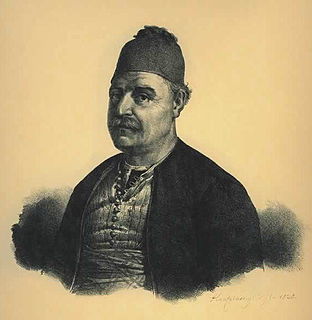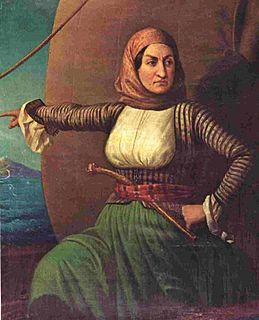 Navarchos Miaoulis - Ναύαρχος Μιαούλης | |
| History | |
|---|---|
| Name: | Navarchos Miaoulis |
| Namesake: | Andreas Vokos Miaoulis |
| Ordered: | 1877 |
| Builder: | Forges et Chantiers de la Méditerranée |
| Laid down: | 1878 |
| Launched: | 1879 |
| Commissioned: | 1879 |
| Decommissioned: | 1931 |
| Fate: | stricken |
| General characteristics | |
| Type: | Cruiser |
| Displacement: | Standard 1,820 tons |
| Length: | 75 m (246 ft) |
| Beam: | 11 m (36 ft) |
| Draught: | 4.4 m (14 ft) |
| Propulsion: | sail; one propeller 2,400 hp (1,800 kW) |
| Speed: | 13.5-knot (25 km/h) maximum |
| Complement: | 180 |
| Armament: |
|
Navarchos Miaoulis (Greek : Ναύαρχος Μιαούλης, "Admiral Miaoulis") was a 1,820 ton Greek masted cruiser (in Greek termed Εύδρομο) named for the admiral Andreas Miaoulis, the leader of the Greek rebels' fleet during the Greek War of Independence (1821-1829).

Greek is an independent branch of the Indo-European family of languages, native to Greece, Cyprus and other parts of the Eastern Mediterranean and the Black Sea. It has the longest documented history of any living Indo-European language, spanning more than 3000 years of written records. Its writing system has been the Greek alphabet for the major part of its history; other systems, such as Linear B and the Cypriot syllabary, were used previously. The alphabet arose from the Phoenician script and was in turn the basis of the Latin, Cyrillic, Armenian, Coptic, Gothic, and many other writing systems.

A cruiser is a type of warship. Modern cruisers are generally the largest ships in a fleet after aircraft carriers and amphibious assault ships, and can usually perform several roles.

Andreas Vokos, nicknamed Miaoulis, was a Greek admiral and politician who commanded Greek naval forces during the Greek War of Independence (1821–1829).
Navarchos Miaoulis was built by Forges et Chantiers de la Méditerranée in France, and she was purchased by Greece as part of their program of naval expansion after the unsuccessful Cretan uprising of 1866. She was soon rendered operationally obsolete with the acquisition of newer, faster and larger ships such as the battleship Spetsai and was made into a training ship. She served on active duty in this capacity until decommissioned in 1931.

France, officially the French Republic, is a country whose territory consists of metropolitan France in Western Europe and several overseas regions and territories. The metropolitan area of France extends from the Mediterranean Sea to the English Channel and the North Sea, and from the Rhine to the Atlantic Ocean. It is bordered by Belgium, Luxembourg and Germany to the northeast, Switzerland and Italy to the east, and Andorra and Spain to the south. The overseas territories include French Guiana in South America and several islands in the Atlantic, Pacific and Indian oceans. The country's 18 integral regions span a combined area of 643,801 square kilometres (248,573 sq mi) and a total population of 67.3 million. France, a sovereign state, is a unitary semi-presidential republic with its capital in Paris, the country's largest city and main cultural and commercial centre. Other major urban areas include Lyon, Marseille, Toulouse, Bordeaux, Lille and Nice.

Crete is the largest and most populous of the Greek islands, the 88th largest island in the world and the fifth largest island in the Mediterranean Sea, after Sicily, Sardinia, Cyprus, and Corsica. Crete and a number of surrounding islands and islets constitute the region of Crete, one of the 13 top-level administrative units of Greece. The capital and the largest city is Heraklion. As of 2011, the region had a population of 623,065.

A battleship is a large armored warship with a main battery consisting of large caliber guns. During the late 19th and early 20th centuries the battleship was the most powerful type of warship, and a fleet of battleships was considered vital for any nation that desired to maintain command of the sea.










